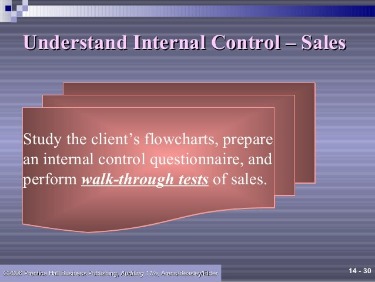Content

Regularly tracking the KPIs in finance departments help companies remove all the errors and optimize their performance. It is imperative that you do not rely on this efficiency ratio to make a judgment on how the company is doing in terms of its payments due. However, if the DPO is low but the company is struggling to make ends meet, the management should think of a way to manage their business money and dues in a more strategic manner. Join our community of finance, operations, and procurement experts and stay up to date on the latest purchasing & payments content. Orders were fulfilled faster since employees could place orders from one approved catalog into one cart shared across every vendor. Reporting on expenses went from a five to six-hour monthly exercise to a fast single payment with one consolidated invoice. In their previous system, managers at SoulCycle had to jump through several unnecessary hoops to complete transactions.
- Now it is time for Leslie, as the CEO of her company, to step into action.
- An even dire situation is when each month you have to process accounts payable before your accounts receivable.
- It’s the responsibility of the finance team to ascertain whether the discount outweighs the benefit of paying later and using the cash for other purposes until the invoice is due.
- Ideally, supplier inquiries should be less and this is possible through automation wherein suppliers clear and easily understand invoices, terms of procurement, and other details.
- But it’s important to balance the advantages of better cash availability against the potential impact on vendor relationships.
- For example, a high DPO may cause suppliers to label the company as a “bad client” and impose credit restrictions.
A very important aspect of the Measure Accounts Payable Management Performance With Days Payable Outstanding optimization of a business is the accounts payable process and the team that is supposed to manage it. While DPO focuses on the company’s current outstanding payables, the CCC follows the entire timeline. This extends from when the cash is converted into inventory, expenses, and accounts payable through to sales and accounts receivable, and then back into cash in hand when received. This is a metric that expresses the amount of time that a company takes to convert inventory investments and other resources into cash flow from sales. Use this free DPO template to calculate DPO for your own company and compare it with other businesses.
What Are the Biggest Challenges in Accounts Payable?
If a company waits until the last minute to pay its bills, it can use the cash in the meantime on other programs. For example, the company may be able to use cash to pay other business expenses instead of borrowing money, thus avoiding interest costs. To manufacture a salable product, a company needs raw material, utilities, and other resources. While the AP turnover ratio tells you how many times per year your AP totals are paid off, the DPO calculates the average number of days it takes to pay them off.

One way to https://intuit-payroll.org/ is to run DPO together with days sales outstanding or DSO, which tells you how long it takes for you to collect on sales. Businesses often will pay some vendors early to take advantage of early payment discounts, while actively working with others to obtain more favorable credit terms which allow them to pay less frequently. Paying your bills too early can also deplete cash flow levels, prohibiting your business from making any short-term investments or using your cash for business growth. Though 100% electronic invoices is an ideal situation, some invoices need to be handled manually due to complexity and legal issues. Therefore, firms could ensure that this percentage is as high as possible to free up time for AP staff. Even though achieving a 100% on this is quite tough, the firm should have this as an objective for the AP department.
Interpreting Days Payable Outstanding
The entity wants to calculate the days payable outstanding on a monthly basis. A company has an outstanding payment of $2500, and the cost of sales in producing the product is $760. Skipping this step likely means improving the DPO at the expense of supplier relationships. While it may give short-term rewards, it will cause long-term problems when suppliers start tightening charging late fees and reducing payment terms. While delaying payment may be a strategic decision, payment delays based on manual AP processing take the choice out of your hands.
Typical DPO values vary widely across different industry sectors, and it is not worthwhile comparing these values across different sector companies. A firm’s management will instead compare its DPO to the average within its industry to see if it is paying its vendors too quickly or too slowly. It is calculated by dividing the company’s accounts receivable balance by its average daily sales and multiplying by the number of days in the per measured. For example, a company with a high DPO may have sufficient cash on hand to pay its bills when they are due but logistically takes a long time to do so. It can indicate a company is not fully utilizing its credit period; therefore, missing out on potential short-term investment opportunities. Or, it’s possible the company only has short-term credit arrangements with its creditors.
How Do You Calculate Days Payable Outstanding?
A higher DPO means that it takes your business more time to pay your bills. A higher DPO can be the result of not having enough cash flow to pay bills faster, but it can also mean that your suppliers and vendors have provided you with more favorable payment terms. The more the number of suppliers enabled for electronic invoicing the better it is for the firm. Manual invoicing takes time, effort, and resources, reducing the efficiency of AP staff.
- Strive to keep this number as low as possible and identify what could be causing these payment errors.
- It could also mean that there is working capital for a longer time, and that the company has good credit standing, which allows it to pay invoices later.
- A company usually wants to balance the benefit of paying a vendor early against the purchasing power lost by spending capital early.
- As we can see below, Apple’s DPO from 2017 to 2019 has been in excess of 100 days – which is very beneficial to its short-term liquidity.
- All these are potentially time-consuming and labour-intensive manual tasks.
- Accounts Payable KPIs help this department and the employees get a better understanding of the process to find answers.
It is important to identify bottlenecks in the AP process and deploy a system to ensure an optimum DPO. You can track the overall efficiency of the AP department by monitoring the time elapsed between the receipt and the approval of an invoice. This metric is a fixed period divided by the number of invoices processed in that period. Delays in invoice processing are usually caused by errors in invoice data and can increase costs, damage relationships with vendors, and cause an organisation to miss out on early payment discounts.
Some might be quick while some others might take their own time processing an invoice. However, it is important to check whether members who have quick turnaround times churn out error-proof invoices. In order to determine whether the department is meeting its objectives, it is necessary to measure the same.
How do you forecast accounts payable using DPO?
Step 3. Forecast Accounts Payable Using DPO. Using the 110 DPO assumption, the formula for projecting accounts payable is DPO divided by 365 days and then multiplied by COGS. For example, we divide 110 by $365 and then multiply by $110mm in revenue to get $33mm for the A/P balance in 2021.
For this reason, while A/P is typically projected using DPO, it is also perfectly acceptable to project A/P as a simple percentage of revenue. In another version, the average value of beginning AP and ending AP is taken, and the resulting figure represents the DPO value during that particular period. It’s quite clear – a company can use the money it has to pay at the end of the month in order to make a profit; a type of investment, one could say.
